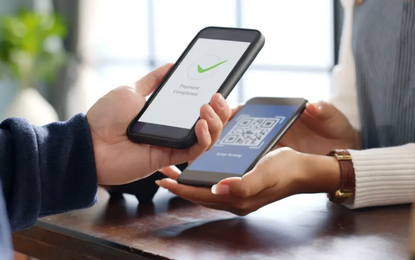

Digital payments are evolving quickly into a new era where data science, information security and partnerships are key to remaining relevant
As more and more people embrace contactless payments, new challenges are emerging for the industry. Now, the push to increase digital payments is reaching new niches - small businesses are joining the trend, for example - but other efforts are still needed to accelerate adoption.
In 2020, the lack of preparation for the surge in demand for contactless transactions was obvious. Part of the new normal involved seeking out simple, fast, and integrated payments tools, and many companies seized the moment to drive their technological transformations.
But in the digitalization process, continual updatesare key to staying relevant, especially in an environment where competitors are increasing, and the needs of users and retailers are constantly changing.
For banks, it’s time to aim for technological maturity in payments: deepening strategies, turning to cutting-edge technologies such as data analysis and tokens, and diversifying the range of the range of product features.
A new focus on data
In this regard, payments capabilities of all kinds offer a new value-add in mobile finance. While many players have not yet prioritized these types of services, they allow data to be collected from other products and services that consumers use daily.
We can look at Google Pay, for example. Although it is not a financial institution, Google attracts and manages data from its users, to later link them to specific advertisements. All this under the umbrella of millions of transaction-based data elements.
In payments processes, data is collected, computed, shared, and used digitally, not only at low cost, but on a larger scale. It is precisely this ability - to access masses of data and analyze it to gain new consumer insights - that is opening opportunities such as personalized commercial finance models.
Another important element regarding technological maturity for digital payments lies in security. In this regard, tokenization improves cyber defenses as well as the user experience by replacing sensitive data with automatically generated codes, better known as tokens.
Typically, tokenization is used in debit or credit card payments when making an online purchase. In this case, these codes replace the user's card data for an end-to-end encrypted token.
In the field of mobile payments through digital wallets, the process is similar. Instead of storing the card information directly, the wallet replaces the data with a tokenized code. Thus, the original card data cannot be extracted by cyber criminals.
It should be noted that tokenization is also emerging as a payment facilitator, as it immediately and directly links to the wallet on a user’s mobile phone.
The growth of new players in the financial ecosystem is changing users’ needs when it comes to mobile payment processes, which in turn is raising the bar for traditional banks.
Given this fact, it is not always feasible to invest in the necessary infrastructure to be prepared for the future in payments. A better option can be to bet on collaborations or partnerships with other technology companies, whose efforts are adding millions of users to their payment channels.
At this point, while technological maturity is necessary, so is competitive maturity, which leans towards working together with other companies.
Alliances between technology companies and financial institutions through banking-as-a-platform models are an example of this.
Payment APIs are being used to provide a more frictionless experience, while offering a broader variety of payment methods. In addition, they can provide access to real-time reporting and payment status updates, which helps eliminate the need to track whether a payment has been received or sent.
As time goes on, these and other strategies will evolve into newer, more complex ones, so it's time for banks to embrace trial and error to adopt new technologies and services. Those that embrace change the fastest, along with a strong competitive value proposition, will be the businesses that experience the greatest profitability in the future.
Join our online community and stay up to date with the latest news from the world of technology.